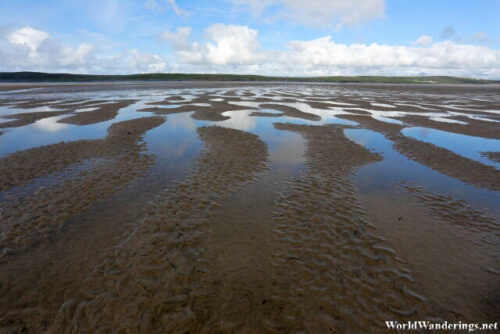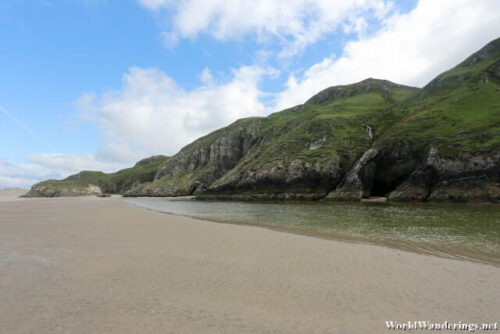The beach at Maghera is actually a huge deposit of sand formed from the nearby estuary. This is a common feature of the land in this part of Donegal and it is not a surprise to see several of them here. This, however, seems to be the most impressive of them by far. It is best to visit this place when the tide is low because it would take time to go all the way to the edge. I arrived shortly after the lowest point of the tide so I knew that time was not on my side. While I was taking my time walking the beach, the tide was slowly creeping in. What was almost dry sand was now slowly looking more and more wet. The swampier areas were starting to fill up with water as you can also see the channel on the left is starting to become deeper.
The height of the sand also varied from place to place with the parts near the sea seemingly higher. This means that you run the risk of getting stranded on a sandbar one the time comes in. I don’t know how deep the water gets here in the area but I think I don’t want to find out. I can see that there are people enjoying themself near the sea but I was already staring to make my way back to the car park. Already, I found myself having to wade through a small channel to get to drier land. No wonder some of the caves at Maghera are not accessible when the water is high.
[xmlgm {http://www.worldwanderings.net/kml/MagheraBeach.kmz} zoom=19]

